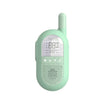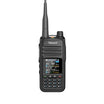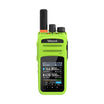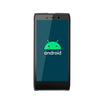In the realm of communication technology, two-way radios play a crucial role in facilitating clear and effective dialogue across various industries. Among the plethora of options available, narrowband radios and Push-to-Talk Over Cellular (PoC) radios stand out as prominent choices. If you're new to these technologies or seeking clarity on their distinctions, this article aims to guide you through the fundamental differences between them.
Understanding Narrowband and PoC Radios
Narrowband Radios:
Narrowband radios are designed for close-range communication, typically utilized in environments where quick and proximity-based discussions are frequent. These radios operate within a limited coherence bandwidth, making them suitable for specific applications, particularly in security departments.
PoC Radios:
PoC radios, also known as Push-To-Talk radios, leverage modern technology to enhance communication processes. Offering features such as LTE support, Wi-Fi connectivity, display screens, and extended battery life, PoC radios represent a significant advancement in wireless communication technology. They are widely adopted across various sectors for their versatility and functionality.
Key Differences Between Narrowband and PoC Radios
- Communication Distance:
PoC radios offer superior area coverage compared to narrowband radios. With a wider bandwidth, PoC radios can effectively cover broader areas without interference. In contrast, narrowband radios are limited to a specific bandwidth and are primarily effective for close-range communication.
- Sound Quality:
While both narrowband and PoC radios feature noise cancellation capabilities, PoC radios typically offer faster and clearer voice transmission. PoC radios often sample audio at a higher rate, resulting in improved sound quality. Additionally, PoC radios from reputable manufacturers like Inrico may feature stereo audio effect loudspeakers, enhancing user experience.
- Multimedia Communication Requirements:
PoC radios surpass narrowband radios in terms of multimedia communication capabilities. While narrowband radios are limited to certain modes of communication, such as voice transmission, PoC radios offer flexibility for various modes, including video, LTE, and messaging. This versatility allows users to communicate effectively across different situations.
- Data Security:
Both narrowband and PoC radios ensure secure information transmission. However, PoC radios are often preferred in security-sensitive environments due to their wider frequency range, advanced applications, and enhanced security features. PoC radios provide peace of mind to users regarding data security and confidentiality.
- Expandable Applications:
PoC radios offer greater flexibility in terms of software customization and additional applications. Unlike narrowband radios, which are limited to built-in features, PoC radios allow users to personalize their usage by adding extended software and applications. This flexibility enhances user experience and productivity, making PoC radios a preferred choice for many users.
Looking Towards the Future:
As technology continues to evolve, the future trend in communication equipment leans towards integrated solutions that combine the benefits of narrowband and broadband radios. Multi-mode radios, such as DMR&PoC radios, offer users an all-inclusive solution by integrating narrowband and broadband communication capabilities. This convergence represents the next frontier in wireless communication technology, providing users with enhanced efficiency, versatility, and functionality.
In conclusion, while narrowband and PoC radios have their distinct advantages, the choice between them depends on specific communication requirements and preferences. Whether it's for close-range communication or multimedia capabilities, understanding the differences between these technologies can help users make informed decisions to meet their communication needs effectively.






























